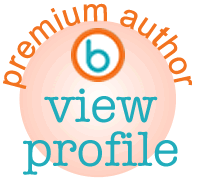-
Author Insight
Beyond Twitter Basics
The book is called Advanced Twitter Strategies for Authors for a reason, and that's because it takes up where most other Twitter guide books leave off. I wrote this chapter with two objectives. Firstly to demonstrate knowledge of the basics so that the reader could understand that the book wouldn't cover them in any real detail. I even recommend other good books for authors. Secondly, I wanted to show how most advice books on Twitter describe all that activity that needs to be done without taking into account how much time it all takes! Freeing up time to write more while still remaining effective on Twitter is the primary objective of this book.


Book Excerpt
Advanced Twitter Strategies for Authors
There is a ton of advice on the Internet and in how-to books that help authors understand how to be successful on Twitter. They teach you how to build and perfect your Twitter profile, because most users will check your profile before they follow you. They give you tips on using the right photo, ideally a close-up of your face, for your profile picture. They help you work out what to have as a background image (for authors this is typically an image of your book covers). They tell you how to make your bio description informative but personable. They guide you on the right tweet to pin at the top of your profile.
Then, after your profile is built, they teach you what to tweet. For if you tweet effectively, ideally using one or two hashtags to increase visibility, people will follow you. They instruct you to post more frequently to gain more followers. According to exhaustive analytical studies, there is a direct correlation between the number of tweets one makes and the number of followers one has.
These how-to books also tell you to search out new people to follow. First of all they recommend importing all the people you already know from email, LinkedIn and other sources. Then they teach you how to search out new, interesting tweeters and propose that you follow them. They stress that you must immediately follow anyone who engages with you or retweets your posts. They show you how to discover whom other influential tweeters follow and recommend you follow them. And for completeness, they also suggest looking at their followers and following them too. They'll even let you into the secret of public lists: curated lists of vetted Twitter users ready for you to mass follow. And some will even explain how to navigate around Twitter's restriction of following only 10% more users than follow you when your follower count exceeds 2,000.
Then comes hashtags. They propose that you search them out and join in the conversation. After all, Twitter is about engagement.
By now, you've probably got a few hundred followers yourself. Guess what? They need to be kept engaged as well. You're told to mention them wherever possible. To retweet their tweets and to tweet new content that might be interesting to your audience.
They'll caution you to make sure that only a small percentage of your tweets should be promotional about your books. They'll advise you that tweets containing links are more likely to be retweeted. And pictures? Even better: at least twice as much engagement than any other type of post.
Lastly, they'll advise you to advertise your Twitter name everywhere you have a presence: your website, blog posts, business cards, books, Amazon page and signature on your email.
THIS BOOK ASSUMES YOU ALREADY KNOW MOST OF THAT STUFF!
Okay, it will cover some of these basics in summary, just to make sure we're all on the same page. But if you need more detailed guidance on any of the basic Twitter techniques described above, then there really are many other resources you should read before considering attempting the more advanced techniques detailed in this book. A simple Google search will offer up lots of advice.
For actual how-to books, I recommend Twitter for Authors: Social Media Book Marketing Strategies for Shy Writers by Beth Barany or Twitter for Authors (Busy Writer's Guides Book 6) by Marcy Kennedy. These books cover the basics very effectively.
But what none of these Twitter guides tell you is how to do it all in much less time. Because if you reread the above summary of how to engage effectively on Twitter, you'll quickly realise that it's a major rabbit hole.


Click Follow to receive emails when this author adds content on Bublish


Comment on this Bubble
Your comment and a link to this bubble will also appear in your Facebook feed.